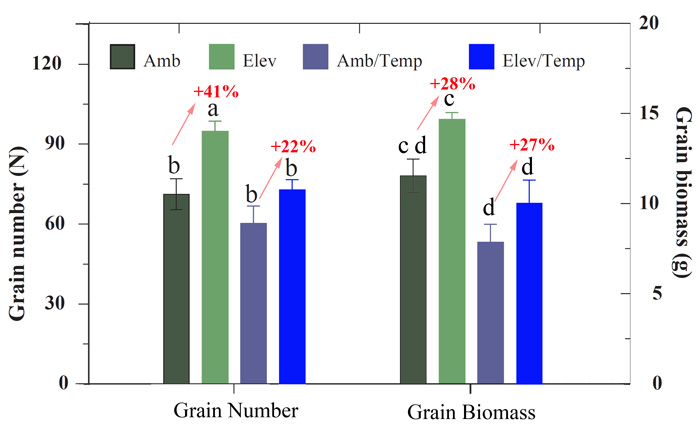| Tweet | Follow @co2science |
Paper Reviewed
Palacios, C.J., Grandis, A., Carvalho, V.J., Salatino, A. and Buckeridge, M.S. 2019. Isolated and combined effects of elevated CO2 and high temperature on the whole-plant biomass and the chemical composition of soybean seeds. Food Chemistry 275: 610-617.
Introducing their work, Palacios et al. (2019) say that "literature containing evidence of combined effects of both elevated CO2 and high temperature on the yield and composition of grains over the development and grain filling is scarce." Therefore, it was their objective to study the impact of elevated CO2 and high temperature on a key soybean variety (cv. MG/BR Conquista) that is grown throughout Brazil.
The experiment was conducted in open-top chambers at the LAFIECO laboratory of the Botany Department, University of São Paulo. Soybean seedlings were sown in pots in the open-top chambers and grown under either ambient (380 ppm) or elevated (800 ppm) CO2 concentrations and ambient or elevated (+4°C) temperatures throughout the course of the growing season. The four resultant treatments included: ambient CO2 and ambient temperature (Amb), elevated CO2 and ambient temperature (Elev), ambient CO2 and elevated temperature (Amb/Temp) and elevated CO2 and elevated temperature (Elev/Temp).
Relative to ambient CO2 and ambient temperature conditions, elevated CO2 alone had a positive impact on soybean grain number (41% increase) and grain biomass (28% increase) whereas elevated temperature had a negative impact (see Figure 1 below). In combination, however, the positive yield-enhancing effects of elevated CO2 cancelled out the yield retarding effects of elevated temperature such that there was no significant difference in soybean grain number or biomass between the Elev and Elev/Temp treatments.
So what will the future bring for the grain biomass of this key Brazilian cultivar? Given that the climate models are presently overestimating the warming power of CO2 by a factor of three, it is expected that positive effects of rising atmospheric CO2 will more than compensate for any potential negative growth effects from a modest temperature rise. And thus we expect soybean grain biomass to increase. And that is a future we should all look forward to!

Figure 1. Effects of treatments elevated CO2 and elevated temperature on grain number and grain biomass of soybean plants (cv. MG/BR Conquista) grown in open-top chambers. Values followed by the same letter are not significantly different (p < 0.05). The percentages shown in red indicate the percent change in grain number or biomass due to elevated CO2 under either ambient or elevated temperature conditions. Legend: Amb = ambient temperature and ambient CO2, Elev = ambient temperature and elevated CO2, Amb/Temp = ambient CO2 and elevated temperature, Elev/Temp = elevated CO2 and elevated temperature. Adapted from Palacios et al. (2019).




